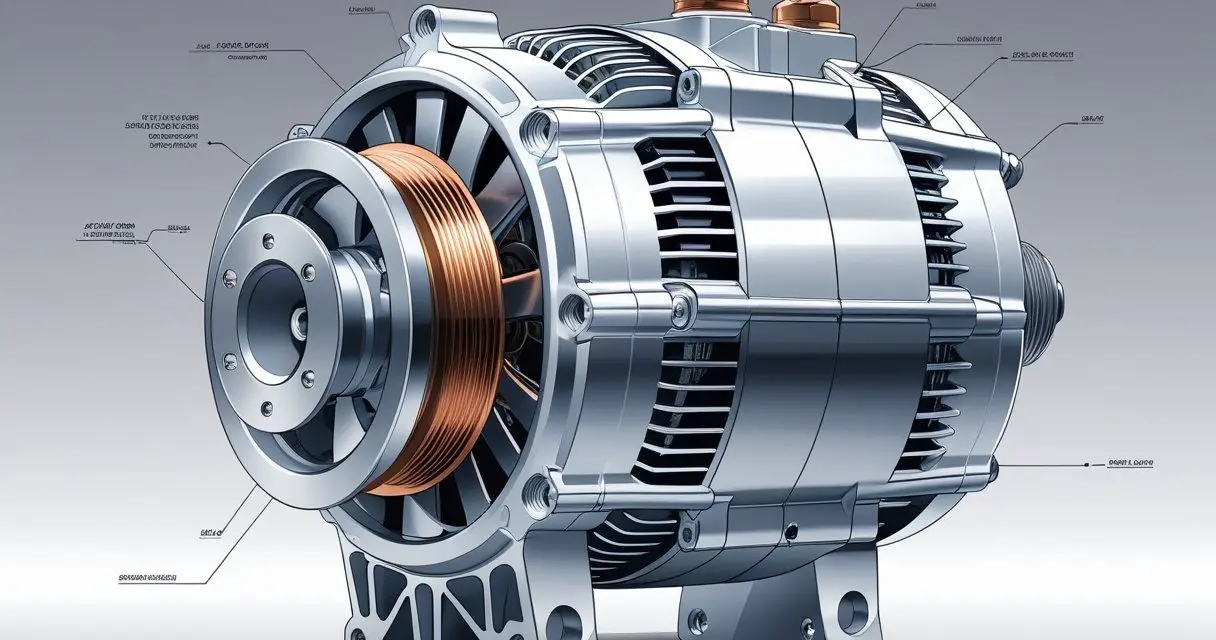Would you like to save this article?
Running your RV inverter while driving might seem like the perfect solution for staying cool during those long summer road trips, but is it really safe for your electrical system?
This comprehensive guide reveals everything you need to know about powering your RV inverter on the road. Whether you’re a weekend warrior or a full-time RVer, understanding these crucial facts could save you from costly repairs and keep you comfortable during travel. The National RV Training Academy’s expert insights will help you make informed decisions about your mobile power setup.
From alternator protection to wire upgrades, we’ll cover the essential knowledge every RV owner should have.
1. Your 7-Pin Connector is Actually Your Safety Net
The standard 7-pin connector between your truck and RV does more than just handle your brake lights and turn signals. It’s your primary charging connection that allows your truck’s alternator to charge your RV’s battery system. According to the National RV Training Academy, this connector typically uses 14-gauge wire, which naturally limits the amount of current that can flow through the system.
Here’s what most RVers don’t realize: This wire limitation is actually protecting your alternator from overload. The resistance created by the smaller gauge wire and the distance (typically over 20 feet) acts as a natural current limiter.
Key Specifications:
| Component | Standard Rating | Limitation Factor |
|---|---|---|
| 7-Pin Connector Wire | 14 Gauge | Natural current limiting |
| Typical Distance | 20+ feet | Increases resistance |
| Safe Operating Range | Under alternator capacity | Built-in protection |
You might think this sounds like a design flaw, but it’s actually brilliant engineering. The automotive industry knew that RV owners would eventually push the limits of their electrical systems, so they built in natural safeguards that prevent most people from accidentally destroying their alternators.
2. Most Alternators Aren’t Built for Marathon Performance
Your truck’s alternator wasn’t designed to run at 100% output continuously. Think of it like a sprinter trying to run a marathon – it might handle short bursts of high demand, but sustained maximum output will eventually cause problems. The National RV Training Academy emphasizes that alternators lack the “logic” to protect themselves from continuous heavy loads.
Here are the critical facts about alternator limitations:
- Most alternators are designed for intermittent high-load operation
- Continuous 100% output can lead to premature failure
- Heat buildup is the primary enemy of alternator longevity
- Typical alternator lifespan decreases significantly under continuous heavy load
You’re basically asking your alternator to work overtime without breaks when you run high-demand appliances like air conditioning. It’s like expecting your smartphone battery to maintain peak performance while running every app simultaneously – eventually, something’s got to give.
3. Wire Upgrades Can Turn Your Safety Feature Into a Liability
Many RV enthusiasts upgrade their charging wires thinking bigger is always better. But here’s the catch: upgrading to larger gauge wire or Anderson connectors can actually put your alternator at risk. When you eliminate the natural resistance that protects your alternator, you remove the built-in safety mechanism.
Wire Upgrade Comparison:
| Wire Type | Gauge | Current Capacity | Alternator Risk |
|---|---|---|---|
| Standard 7-Pin | 14 AWG | Limited | Low Risk |
| Upgraded Wire | 10-12 AWG | Moderate | Medium Risk |
| Anderson Connector | 8-10 AWG | High | High Risk |
The irony is that the “improvement” many RVers make to their electrical system actually creates the problem they’re trying to avoid. It’s like removing the speed limiter from your car and then wondering why your engine is having problems.
4. DC-to-DC Chargers and BIMs Are Your Alternator’s Best Friends
When you upgrade your charging wire, you need to add protection back into the system. DC-to-DC chargers and Battery Isolation Managers (BIMs) are the sophisticated solutions that replace the natural protection you lose with wire upgrades. These devices act as intelligent limiters that protect your alternator while still allowing efficient charging.
Here’s how these protective devices work:
DC-to-DC Chargers:
- Limit throughput to 30-50 amps maximum
- Maintain safe operating parameters for your alternator
- Provide consistent charging voltage regardless of engine RPM
- Cost-effective protection for most RV applications
Battery Isolation Managers (BIMs):
- Cycle 15 minutes on, 20 minutes off automatically
- Prevent continuous high-load operation
- Commonly used in motorcoach applications
- Professional-grade alternator protection
Think of these devices as the personal trainers for your alternator – they make sure it works hard but gets proper rest periods. Without them, you’re essentially asking your alternator to lift weights continuously without any recovery time.
5. The 1,800-Watt Reality Check
Running an 1,800-watt air conditioning unit through your inverter while driving is a serious electrical demand. To put this in perspective, that’s roughly equivalent to running 18 standard 100-watt light bulbs simultaneously. The National RV Training Academy uses this specific example because it represents a common real-world scenario that many RVers face.
Power Consumption Breakdown:
| Appliance | Typical Wattage | Amp Draw at 12V |
|---|---|---|
| RV Air Conditioner | 1,800W | 150 amps |
| Microwave | 1,000W | 83 amps |
| Hair Dryer | 1,500W | 125 amps |
| Coffee Maker | 1,200W | 100 amps |
The math is sobering: 1,800 watts at 12 volts requires 150 amps of current. Most truck alternators produce between 130-200 amps total, meaning your air conditioner alone could consume 75-100% of your alternator’s capacity.
You’re essentially turning your truck into a mobile power plant, but unlike actual power plants, your alternator doesn’t have a team of engineers monitoring its performance 24/7. This is why understanding your system’s limitations isn’t just about avoiding repairs – it’s about realistic expectations for your mobile lifestyle.
SOURCES
- National RV Training Academy – Running Your RV Inverter While Driving
- Battle Born Batteries – Pure Sine Wave Inverter for RV
- RV Travel – 12-Volt Battery Dangers
- Don Rowe – Power Inverter FAQ
- Truck Camper Adventure – Heavy-Duty Alternator Charge System
- Outdoorsy – How to Use an RV Inverter
- TechnoRV – How Does an RV Electrical System Work





